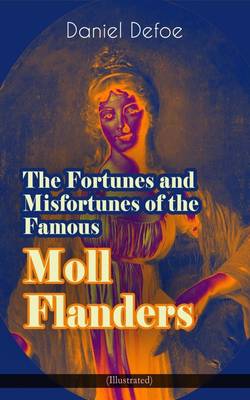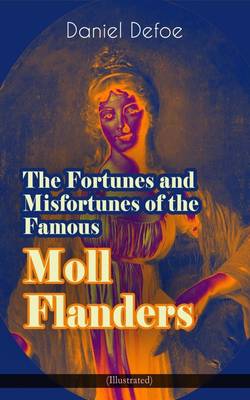
- Afhalen na 1 uur in een winkel met voorraad
- Gratis thuislevering in België vanaf € 30
- Ruim aanbod met 7 miljoen producten
- Afhalen na 1 uur in een winkel met voorraad
- Gratis thuislevering in België vanaf € 30
- Ruim aanbod met 7 miljoen producten
Zoeken
The Fortunes and Misfortunes of the Famous Moll Flanders (Illustrated)
Complemented with the Biography of the Author
Daniel Defoe
Paperback | Engels
€ 14,45
+ 28 punten
Uitvoering
Omschrijving
Daniel Defoe's "The Fortunes and Misfortunes of the Famous Moll Flanders" presents a vibrant exploration of the themes of female resilience, social mobility, and moral ambiguity in 18th-century England. Written in the first-person narrative style characteristic of Defoe's works, the novel follows its titular character through her tumultuous life which encompasses poverty, crime, and ultimately, redemption. With its rich descriptive language and intricate plotting, the book engages the reader in the moral complexities faced by a woman who navigates a patriarchal society, all while providing a satirical commentary on the norms of the time. Defoe, a pioneer of the novel as a literary form, was influenced by his diverse experiences as a trader, journalist, and political activist. His fascination with the intersection of individual stories and broader societal issues is evident in "Moll Flanders," revealing his understanding of the precarious position of women and the unfathomable depths to which one might sink when survival is at stake. This nuanced portrayal likely stemmed from Defoe's own encounters with adversity and his keen observations of the 18th-century social landscape. This illustrated edition not only enhances the narrative through visual storytelling but also provides a compelling invitation for readers to delve into the multifaceted life of Moll Flanders. Recommended for students of literature and anyone interested in the evolution of the novel, this work merges both entertainment and critical social commentary, marking it as essential reading for understanding the complexities of early modern England.
Specificaties
Betrokkenen
- Auteur(s):
- Uitgeverij:
Inhoud
- Aantal bladzijden:
- 252
- Taal:
- Engels
Eigenschappen
- Productcode (EAN):
- 9788026892304
- Verschijningsdatum:
- 14/12/2018
- Uitvoering:
- Paperback
- Formaat:
- Trade paperback (VS)
- Afmetingen:
- 152 mm x 229 mm
- Gewicht:
- 340 g

Alleen bij Standaard Boekhandel
+ 28 punten op je klantenkaart van Standaard Boekhandel
Beoordelingen
We publiceren alleen reviews die voldoen aan de voorwaarden voor reviews. Bekijk onze voorwaarden voor reviews.








